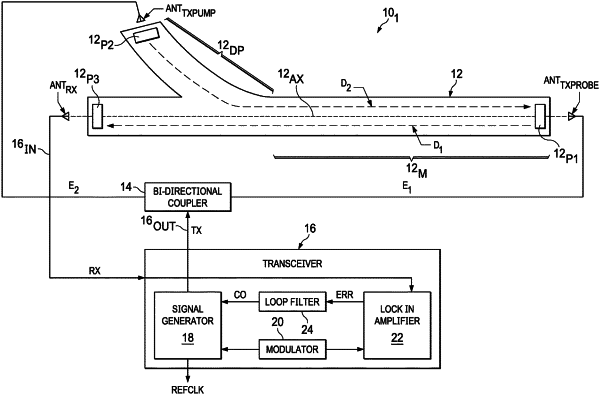| CPC G04F 5/14 (2013.01) [H03B 17/00 (2013.01); H03L 7/26 (2013.01); H01P 5/16 (2013.01); H01P 5/185 (2013.01)] | 19 Claims |

|
1. A clock apparatus, comprising:
a signal waveguide including: a gas cell having a sealed interior; and a dipolar gas inside the sealed interior;
a first apparatus configured to provide a first electromagnetic wave through the sealed interior along a first direction;
a second apparatus configured to provide a second electromagnetic wave through the sealed interior along a second direction, in which the second direction is opposite the first direction; and
transceiver apparatus coupled to the signal waveguide and to the first and second apparatus, the transceiver apparatus configured to:
control the first and second apparatus to concurrently sweep the first and second electromagnetic waves across a range of frequencies;
detect amounts of energy in the second electromagnetic wave passing through the dipolar gas across the range of frequencies;
from among the detected amounts of energy, determine a peak energy and a frequency at which the peak energy occurs; and
control the first and second apparatus to maintain the first and second electromagnetic waves at the determined frequency.
|